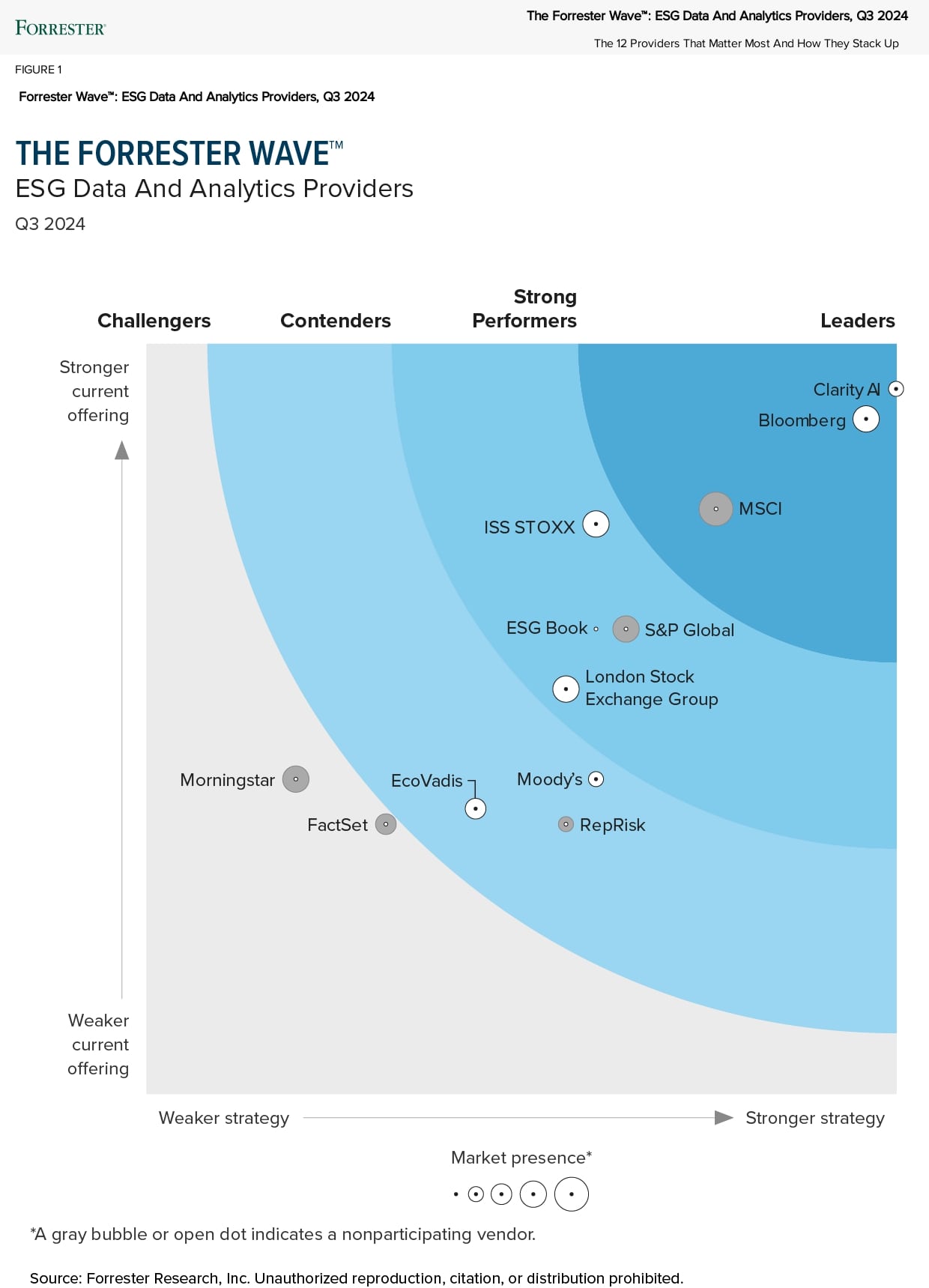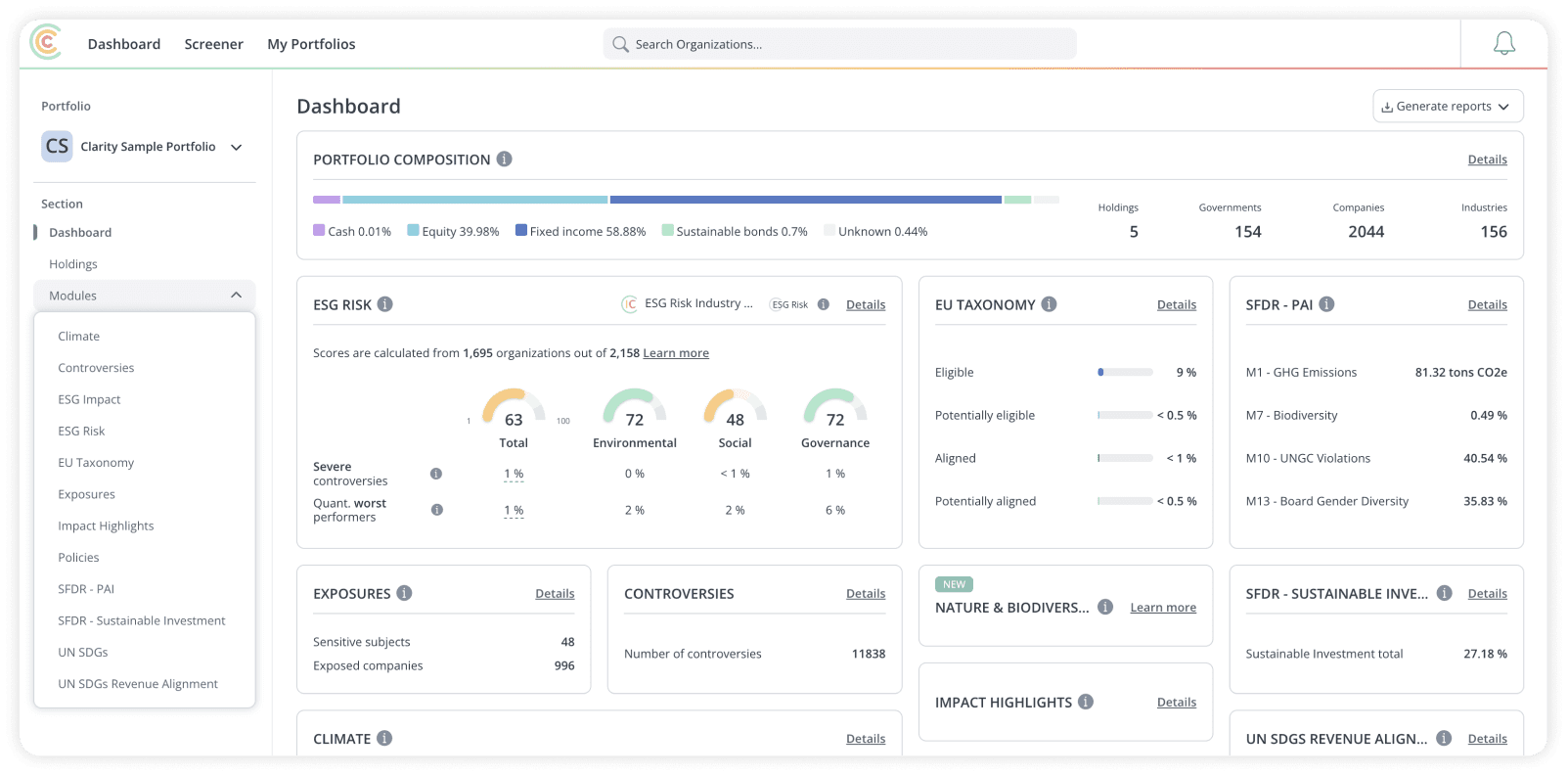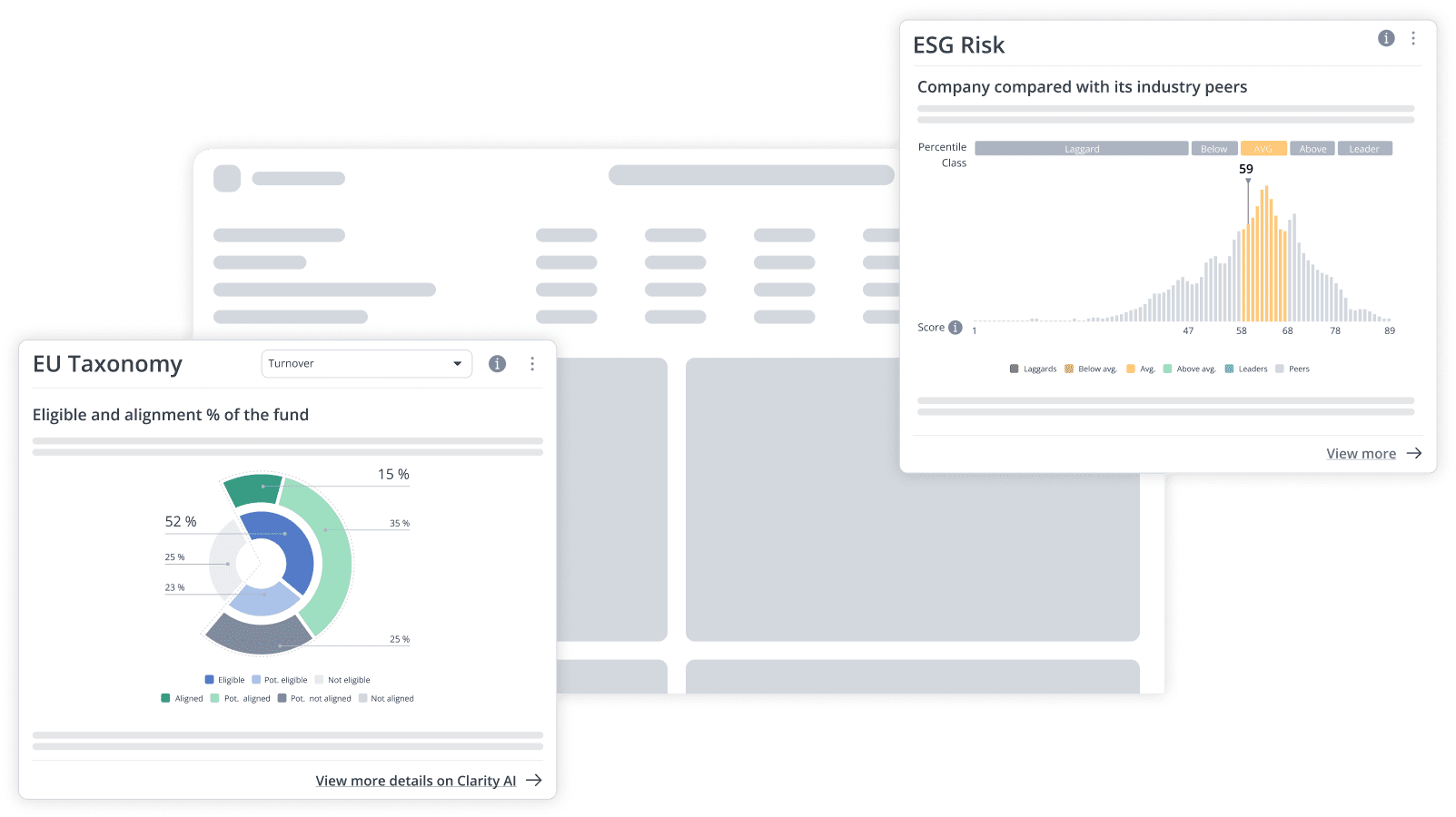Analysis finds correlation between ESG Risks derived from Controversies and market underperformance. Clarity AI controversies predict loss of company value in the mid-term, with an average impact of -5% for high severity incidents.
This article presents an analysis of the link between corporations’ involvement in ESG-related controversial incidents and their impact on stock performance. Our analysis covers over 10,000 incidents for more than 1,500 corporations, and the results are clear: controversial actions linked to ESG have a negative effect on stock performance, resulting in a decline in valuation ranging from -2% to -5% after six months. The study also proves that the degree of impact depends on the type of incident and the industry to which the company belongs, further demonstrating the connection between such incidents and long-term loss of company value. Our analysis confirms that Clarity AI’s Controversy scores are an effective tool for identifying and tracking the evolution of these incidents.
The Impact of ESG Controversies
The success of a company is determined by a range of factors, including tangible assets like property and equipment, financial metrics such as revenue and profits, market share, brand recognition, and intangible assets like intellectual property, reputation, and customer loyalty. However, when a company is involved in a controversial incident, these elements can suffer a significant loss of value due to reputational damage, operational disruptions, and additional costs.
Reputational risk is one of the primary drivers of the negative impact of controversial incidents on a company’s market value. Scandals or unethical behavior can damage a company’s reputation, which is a crucial factor in consumers’ purchasing decisions. This can result in a decline in the company’s revenue and market value as consumers turn to competitors.
Moreover, investors may perceive controversial incidents as a sign of poor management or a lack of ethics, which can erode investor confidence and make them less willing to invest in the company’s stock. The legal and regulatory consequences of such incidents can also be expensive and time-consuming to resolve, further damaging the company’s reputation and market value. Finally, such incidents can disrupt a company’s operations, leading to a decline in productivity and profitability, which can negatively impact its market value.
As a result, ESG frameworks have included metrics that measure a company’s controversial behavior as an additional outside-in measurement of the ESG risk that corporations are exposed to. This underscores the importance of addressing these issues and their potential impact on a company’s market value.
Performance Analysis, Measuring Levels of ESG Risk
At Clarity AI we define controversies as instances of conflicts between a corporation and any given social agent or stakeholder, which have as their setting the breaking of Global Norms linked to Responsible Business Conduct such as the UNGC Principles, the ILO principles, or the OECD Guidelines for Multinational Enterprises.
The Clarity AI Controversies solution leverages state of the art Natural Language Processing (NLP) models to process 100,000+ news articles from 35,000+ trusted sources on a daily basis. The models enable us to swiftly identify which news items relate to controversies, classifying them into one of our 39 MECE controversial categories. Controversies are then assigned a severity depending on the category, the magnitude of the case, its management by the company (issue remediation) and the derived risks for the company. This powerful engine allows us to constantly monitor a large universe of companies, recording any changes in the risk they are exposed to derived from their corporate behavior.
We set out to leverage this large scale of data in order to test the hypothesis that ESG Controversies involvement is a valid predictor of corporate medium-term value loss. Furthermore, our research aims to understand the impacts of different types of controversies -by considering their category- and to take into consideration the effect of materiality on the impacts.
The analysis has been performed on available data for the period between 2018 and 2022, or over 150 million articles, with 10,000+ controversies identified for 1,500+ different corporations.
For analysis purposes all controversies have been classified into one of three different severity groups, namely: Low severity cases, Medium severity cases, and High severity cases. This classification has been done according to the increase in the ESG-derived risks for the company as estimated by our models, which consider the magnitude of the issue, its scope and impact on other stakeholders, and its management by the company.
For each of the controversial instances the evolution of the market value of the company (the company’s stock) has been monitored and benchmarked. To do so, our team applied a Synthetic Difference in Difference model that compares the company’s real performance in the market against a modeled company used as a benchmark. This control company is the result of the combination of weighted averages of comparable companies, with weights set to maximize the similarity of the stock market performance in the period previous to the controversial event. Significant differences between the performances of both companies after the controversial event is assumed to be a causal consequence of the company’s involvement in the controversy.
Results were tested for statistical significance at the 5% level, with a total number of 12,690 incidents qualifying for the analysis.
The Findings: Estimates for the Effects of ESG Risk Exposure
Results show that the initial hypothesis holds and that controversial incidents drive market value underperformance after the six month period in a range between -2% on average for the less severe controversies (“Low”) and -5% for the most severe ones (“High”), with the average delta standing at -2.7%.
Our second hypothesis also holds, with this more general pattern being also reflected within the topic-category groups for which the analysis has been broken down (four different groups were defined on the basis of topic similarity and are further described in Annex 1). In that sense, higher severity incidents lead to larger drops in company value compared to lower severity cases with the largest drops taking place for the topics of mismanagement of the company’s products and services (-11,8% market value loss on average) as well as Environmental.
One further piece of analysis we wanted to test was whether for the industries in which those topics are particularly material; the effects of controversies on company value had a larger magnitude.
Examples of industries considered on this basis for the check are Professional Services, Industrials or Consumer Finance for Bad Governance; Banks, Insurers or Healthcare providers for both Bad Management of services and Products and Dominant Position topics; and Mining, Chemicals and Food Products for the Environmental topic.
The results can be seen in Figure 3, confirming the hypothesis and showing that the value-loss effects derived from their involvement exceeds that of the average of all similar incidents for all companies included in the analysis. The difference is significant, being as large as twofold for the environmental cases and almost threefold for Bad Governance controversies.
Sample cases: Exemplifying ESG Risk Controversies and their Effects on Stock Performance
In order to illustrate the results, we have selected for this article three representative cases that cover a mix of years, controversy types and markets.
Company A
Company A, a major European financial institution, was embroiled in a money laundering scandal (Bad Governance). The bank was accused of facilitating the transfer of billions of dollars from Russia and other former Soviet states to European banks between 2007 and 2015.
The controversy began in 2017, when a whistleblower reported suspicious bank activities serving EU non-resident customers. An internal investigation by the entity revealed that the branch had been used to launder money, and that the bank had failed to prevent or detect the activity.
The scandal upscaled in the months of July to August 2018 with Estonian and Danish prosecutors launching criminal investigations on the entity, closely followed by the US prosecutor. The case led to the resignation of the Bank's CEO and several other top executives, as well as additional investigations by authorities in multiple countries. The bank was finally hit with massive fines and penalties, including a record €480 million fine by the French financial regulator.
The scandal prompted calls for stricter anti-money laundering regulations and greater transparency in the banking industry, and has served as a cautionary tale for other financial institutions.
Clarity AI Controversies models identified the case in its earlier stages raising its risk to Very High severity with the kickoff of the prosecutions in Estonia and Denmark. As it can be seen in Figure 4, when compared to its control company, Company A accumulated a statistically significant delta of -3% of market value after a six month period.
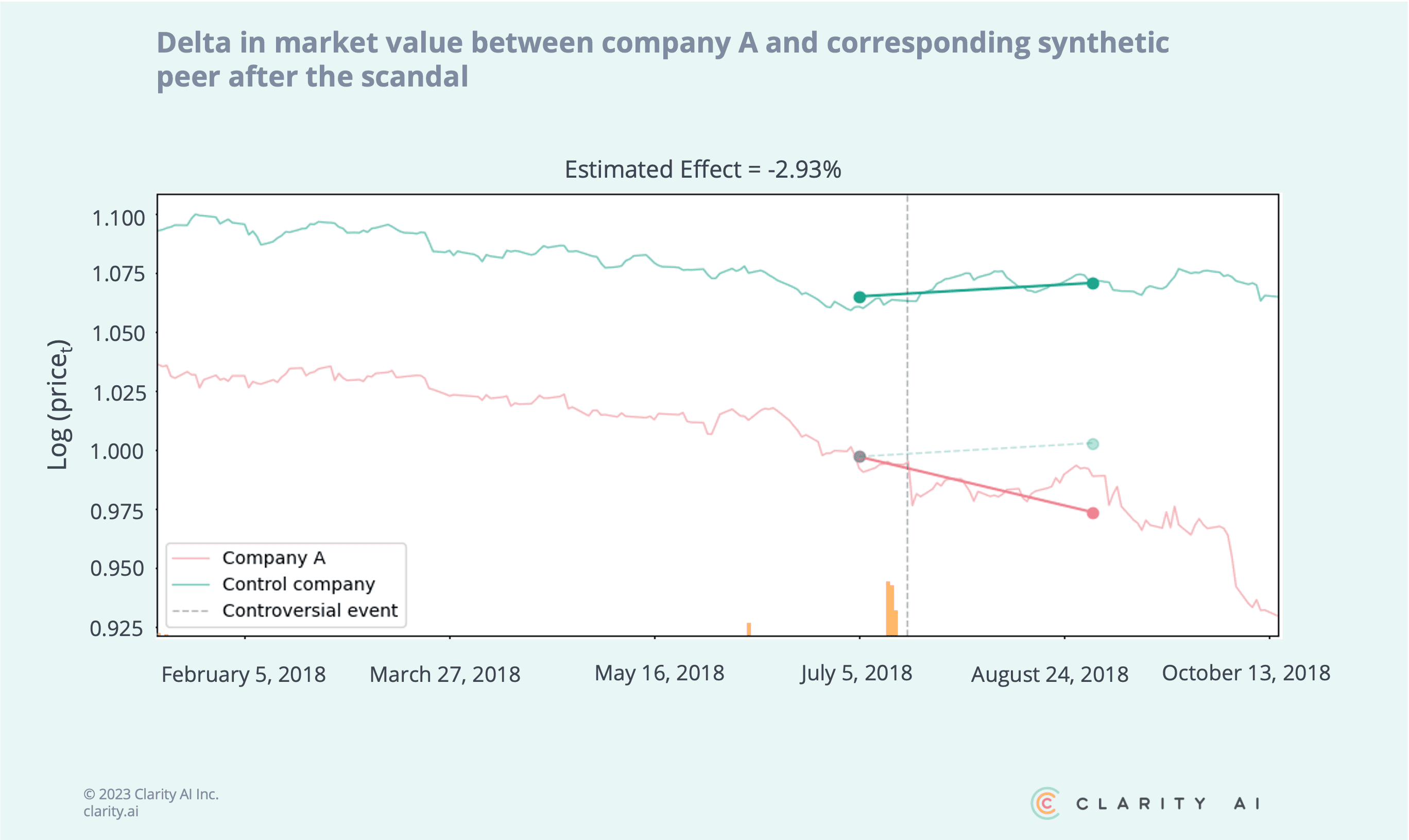
Company B
In 2021 company B, a large European Pharmaceutical company, saw an increase in legal risks related to one of its consumer products, which contains a substance that has been linked to severe adverse health effects and harm to biodiversity (Environmental). In June, a U.S. federal judge rejected a settlement proposal by the company to resolve future claims linked to health issues and its product.
The judge ordered a new trial for the cases in question, citing concerns that the settlement did not adequately compensate plaintiffs and that it did not address the potential harm from future exposure to the product.
Clarity AI Controversies models identified the increase in risk for the company linked to the developments of early June and since that moment, as depicted in Figure 5, Company B accumulated a statistically significant delta of -1.7% of its market value after a six month period when compared to its synthetic control company.
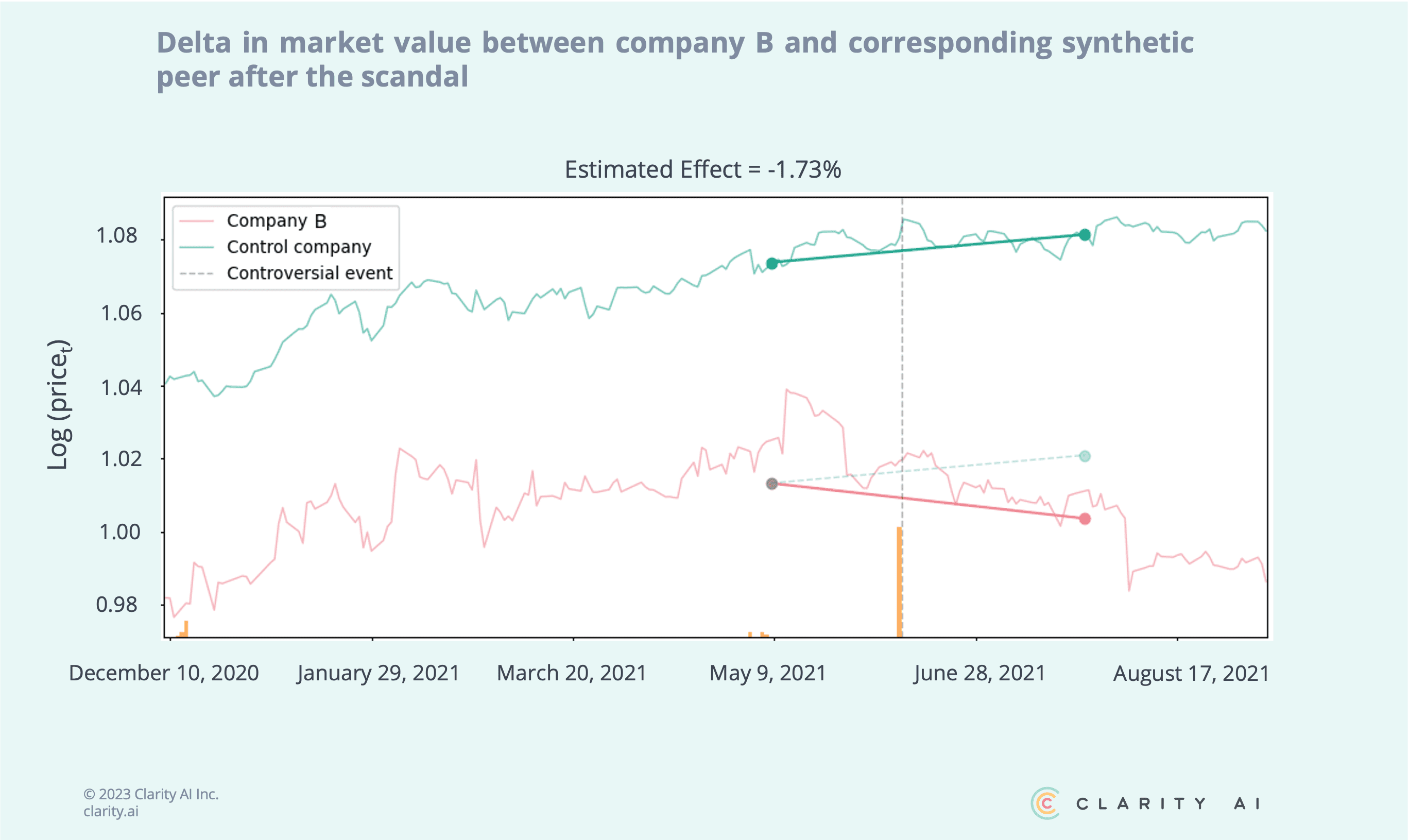
Company C
Company C, a major US financial institution, was involved in fraudulent upselling practices (Bad Mgmt of Products and Services). The scandal came to light in July 2018, when it was disclosed that it had charged more than half a million customers for auto insurance they didn't need, and also improperly charged fees to some customers who wanted to extend their car loans.
The bank's internal investigation found that these practices were due to inadequate incentives, controls and oversight, and that the company had not sufficiently reviewed and tested its practices. The bank also acknowledged that it had failed to provide adequate customer service and had not refunded all affected customers.
The scandal led to significant regulatory and legal repercussions, including a $1 billion fine by the Consumer Financial Protection Bureau and the Office of the Comptroller of the Currency, and a settlement of $480 million to resolve a class-action lawsuit filed by affected customers.
Further implications included the resignation of the bank's CEO, and a general review of the bank's overall culture and governance policies, as well as its risk management and compliance practices, in an effort to regain the trust of customers and regulators.
Clarity AI Controversies models tracked the case, including its slight improvements in terms of ESG Risk through 2018-2019 with remedial measures being implemented and settlements being reached, but then captured an increase in its ESG risk linked to the sudden resignation of the CEO in late March 2019, assigning it a Very High Severity again. As it can be seen in Figure 5, after this event and when compared to its control company, Company B accumulated a statistically significant delta of -2% of market value six months after the incident.
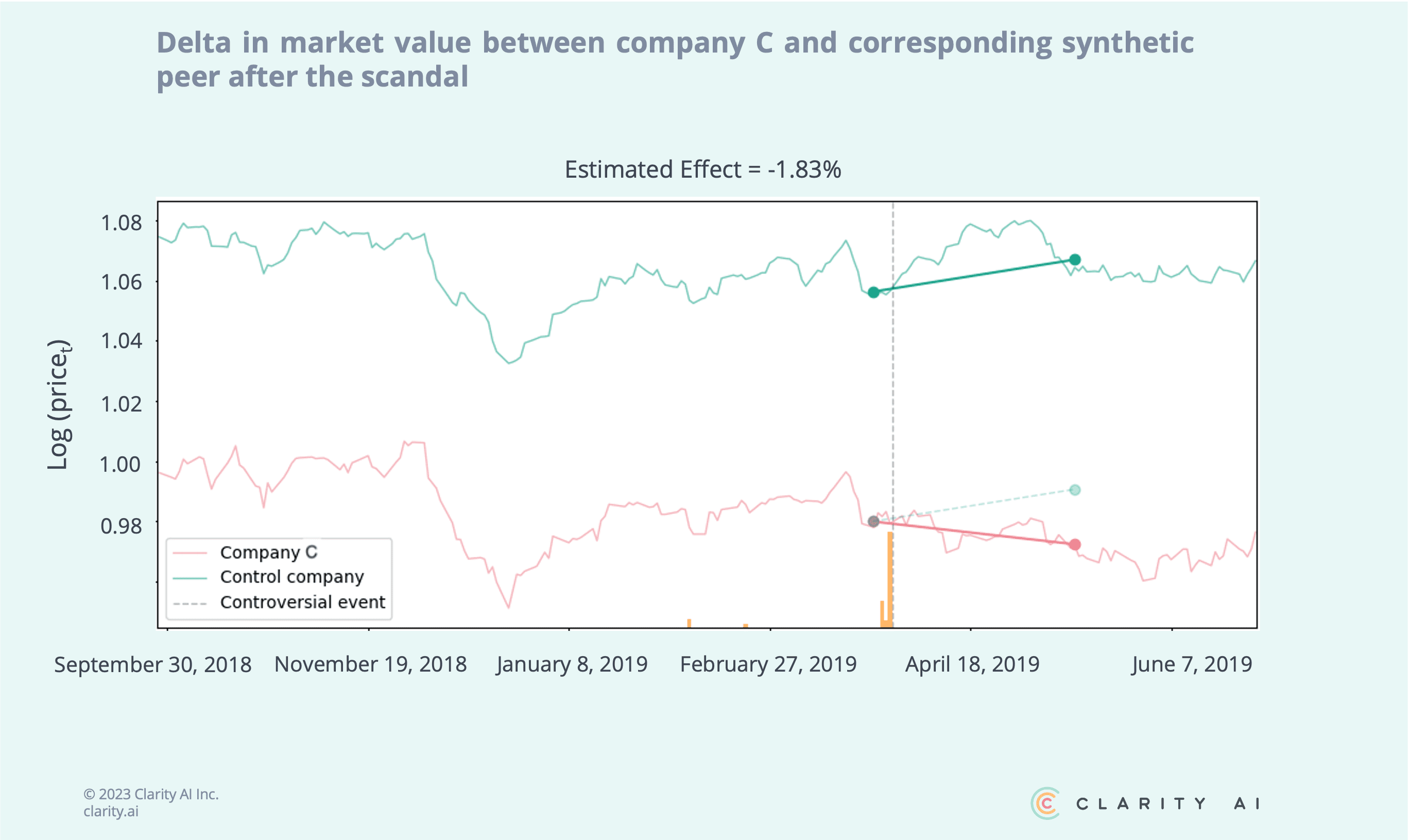
Conclusion
Controversies can significantly affect a company's market value, leading to a decline ranging from -2% to -5% in the total value of the company within six months. This negative effect is directly proportional to the severity of the controversy.
The correlation between ESG Risks derived from Controversies and market value loss is consistent across different types of controversies (including the Environmental, Social, and Governance pillars).
The impact of controversies on a company's market value can be greater if the controversy is related to an issue that is material to the industry the company operates in. The market value loss can increase up to three times compared to the general industry average.
Understanding these risks associated with controversies and taking appropriate measures can help investors build stronger performing portfolios as well as companies minimize market value loss and maintain investor confidence. Guard yourself from potential revenue and reputational losses by leveraging advanced technology, through Clarity AI's Controversies solution.
Annex - Topic category definition
Bad Governance
Bad Governance controversies encompasses controversies included in the Business Ethics, Corporate Corporate Governance and Accounting and Taxation topics of Clarity AI methodology. As such, the incidents included in the category are related to the areas of insider dealings, accounting, misleading financial reporting, tax fraud or avoidance, money laundering, ethical violations, conflicts of interest, excessive management compensation, fiduciary duty breaches and lack of collaboration with authorities.
Bad Management of Services or Products
Bad Management of Services or Products encompasses controversies included in the Product Quality and Safety Responsibility, Consumer Data Privacy and Advertising and Product Representation topics of Clarity AI methodology. As such, the incidents included in the category are related to the areas of deceptive marketing or sales tactics, data privacy breaches, media ethics violations, product recalls, sales of products with negative impacts on health or safety, public health issues resulting from company operations or R&D processes, and consumer complaints about product or service quality. Examples include false advertising, unauthorized collection or use of customer data, censorship or hosting of controversial content, product defects or safety issues, and inadequate quality controls.
Dominant position
Dominant position encompasses controversies included in the Inter-Firm Competition, Intellectual Property and Lobbying. As such, the incidents included in the category are related to the areas of violations of intellectual property rights, such as patents, copyrights, trademarks, and trade secrets. The second pertains to a company's engagement in public policy or regulatory affairs to advance its own interests, including negative lobbying, political contributions, and the lack of transparency in political spending. The third involves anti-competitive practices, such as creating oligopolies or monopolies, price-fixing, collusion, and non-compliance with relevant competition laws.
Environmental
The Environmental controversies group includes three categories related to Environmental impact. Concerns over the volume of water used for production or activities in water-scarce areas, including failure to properly assess risks, violating water withdrawal regulations, and disproportionate water use. Topics related to a company's failure to adhere to sustainable land use standards and prevent habitat loss, including damage to local ecosystems from construction, deforestation, pesticide or chemical use deriving in harm to biodiversity or human health, products with negative environmental impact, including failure to obtain prior approval for potentially hazardous products, misrepresenting pollution from product functioning, and undue use or disposal of plastic in packaging.



